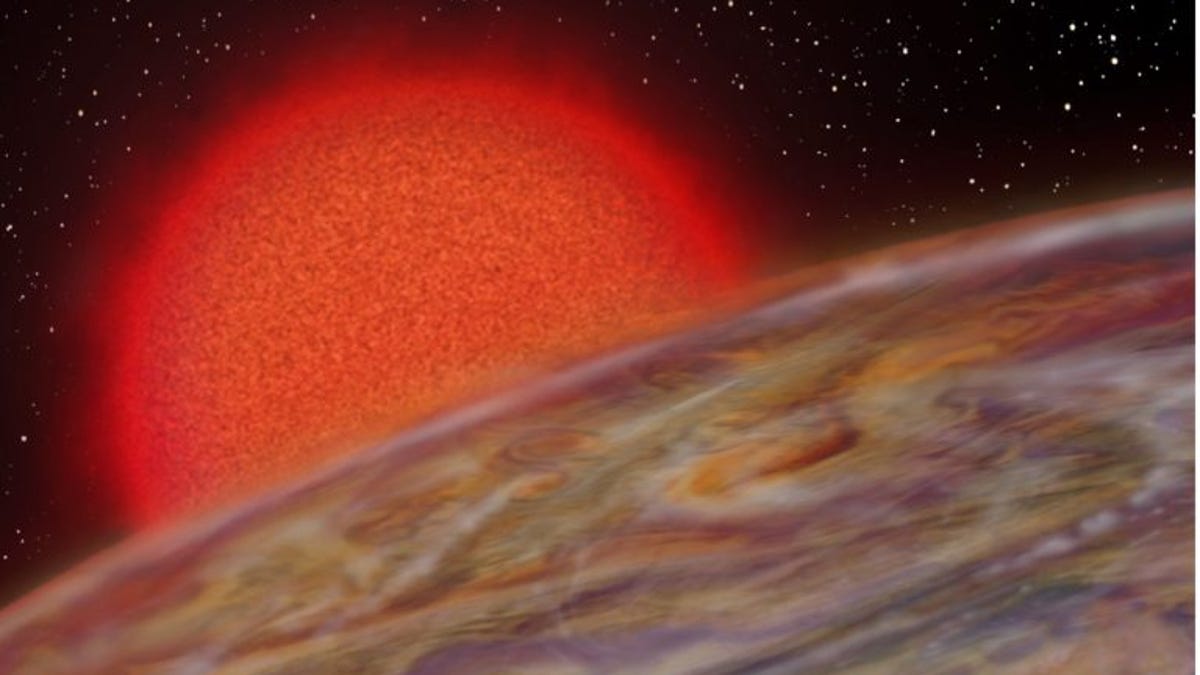NASA satellite spots giant planets on the edge of destruction
One of the worlds is closer to getting swallowed by its sun than any other.

An artist's rendition of what a planetary system similar to TOI-2337b, TOI-4329b and TOI-2669b might look like, with a hot Jupiter-like exoplanet orbiting a dying star.
Of all the known worlds, three Jupiter-sized gas giants spotted by a NASA satellite will likely become the first to be swallowed and destroyed by their own stars.
These precarious planets are known simply as TOI-2337b, TOI-4329b, and TOI-2669b. Each one circles a subgiant or giant star closer than most other planets discovered so far. In fact, researchers say that TOI-2337b will be obliterated by its host star in the next million years. While that may seem like a long time, it's just a blink on the cosmic timescale, making the planet the most imperiled world we know of.
"These discoveries are crucial to understanding a new frontier in exoplanet studies: how planetary systems evolve over time," Samuel Grunblatt, a postdoctoral fellow at the American Museum of Natural History and the Flatiron Institute, said last week in a statement. "These observations offer new windows into planets nearing the end of their lives, before their host stars swallow them up."
Grunblatt is lead author of a paper outlining the discovery that will be published in an upcoming issue of the Astronomical Journal.
The three threatened gas giants were found in images taken in 2018 and 2019 by NASA's Transiting Exoplanet Survey Satellite, or TESS, mission.
Our current understanding is that the final phase of a solar system's lifespan can be chaotic as a star inflates and heats its planets while also potentially altering their orbits and increasing the likelihood of catastrophic collisions. Eventually the whole system can just collapse and be consumed by the star.
Scientists say they will continue to monitor this and other similar planet systems using TESS and other tools like the recently launched James Webb Space Telescope.
"We expect to find tens to hundreds of these evolved transiting planet systems with TESS, providing new details on how planets interact with each other, inflate, and migrate around stars, including those like our Sun," said Nick Saunders, a co-author of the study.
Ultimately, understanding where other planets have been and where ours is heading also informs that key existential question: Are we alone?

